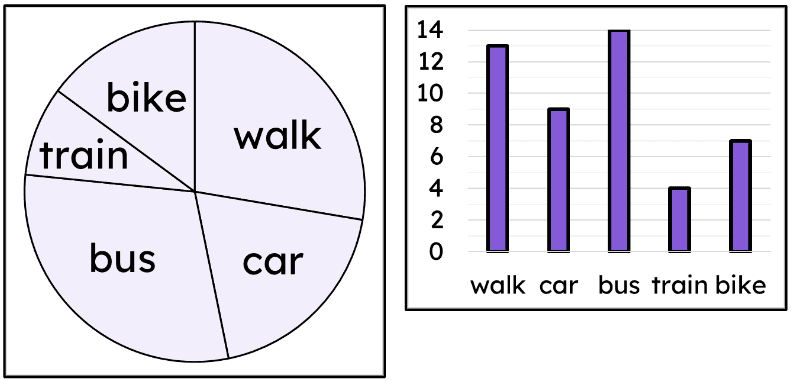Making a journey
I can assess the implications of making a journey in different ways.
Making a journey
I can assess the implications of making a journey in different ways.
These resources will be removed by end of Summer Term 2025.
Lesson details
Key learning points
- There may be many options for how to travel to a place
- Various factors affect which mode of transport is most favourable
- Making the same journey multiple times means the impact of that journey is multiplied
Keywords
Commute - A commute is a regular journey made between a person’s home and their place of work.
Common misconception
When calculating the amount of emissions per mile, pupils may forget to convert the information given from grams to kilograms.
Always check whether the units for any values given in the information match the units that are required for the formula.
To help you plan your year 9 maths lesson on: Making a journey, download all teaching resources for free and adapt to suit your pupils' needs...
To help you plan your year 9 maths lesson on: Making a journey, download all teaching resources for free and adapt to suit your pupils' needs.
The starter quiz will activate and check your pupils' prior knowledge, with versions available both with and without answers in PDF format.
We use learning cycles to break down learning into key concepts or ideas linked to the learning outcome. Each learning cycle features explanations with checks for understanding and practice tasks with feedback. All of this is found in our slide decks, ready for you to download and edit. The practice tasks are also available as printable worksheets and some lessons have additional materials with extra material you might need for teaching the lesson.
The assessment exit quiz will test your pupils' understanding of the key learning points.
Our video is a tool for planning, showing how other teachers might teach the lesson, offering helpful tips, modelled explanations and inspiration for your own delivery in the classroom. Plus, you can set it as homework or revision for pupils and keep their learning on track by sharing an online pupil version of this lesson.
Explore more key stage 3 maths lessons from the Maths and the environment unit, dive into the full secondary maths curriculum, or learn more about lesson planning.

Equipment
Licence
Starter quiz
6 Questions


Exit quiz
6 Questions




